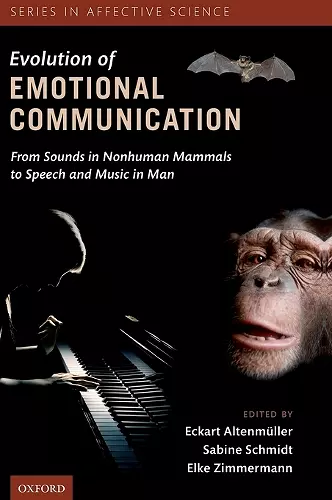The Evolution of Emotional Communication
From Sounds in Nonhuman Mammals to Speech and Music in Man
Sabine Schmidt editor Elke Zimmermann editor Eckart Altenmüller editor
Format:Hardback
Publisher:Oxford University Press
Published:24th Jan '13
Currently unavailable, and unfortunately no date known when it will be back

Why do we think that we can understand animal voices - such as the aggressive barking of a pet dog, and the longing meows of the family cat? Why do we think of deep voices as dominant and high voices as submissive. Are there universal principles governing our own communication system? Can we even see how close animals are related to us by constructing an evolutionary tree based on similarities and dissimilarities in acoustic signaling? Research on the role of emotions in acoustic communication and its evolution has often been neglected, despite its obvious role in our daily life. When we infect others with our laugh, soothe a crying baby with a lullaby, or get goose bumps listening to classical music, we are barely aware of the complex processes upon which this behavior is based. It is not facial expressions or body language that are affecting us, but sound. They are present in music and speech as "emotional prosody" and allow us to communicate not only verbally but also emotionally. This groundbreaking book presents a thorough exploration into how acoustically conveyed emotions are generated and processed in both animals and man. It is the first volume to bridge the gap between research in the acoustic communication of emotions in humans with those in animals, using a comparative approach. With the communication of emotions being an important research topic for a range of scientific fields, this book is valuable for those in the fields of animal behaviour, anthropology, evolutionary biology, human psychology, linguistics, musicology, and neurology.
ISBN: 9780199583560
Dimensions: 246mm x 185mm x 26mm
Weight: 824g
392 pages